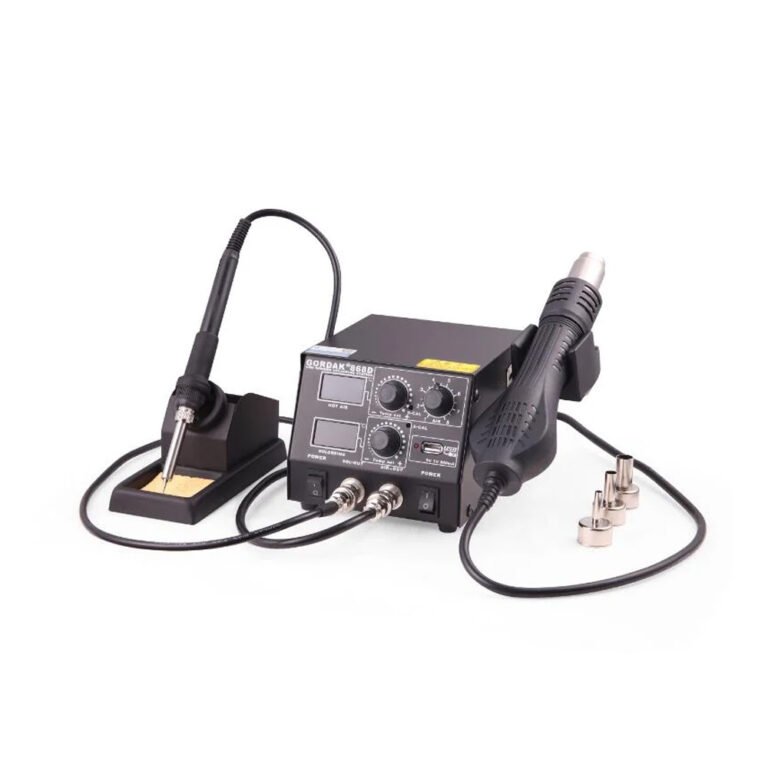As electronics continue to shrink in size while increasing in complexity, the demand for precise and efficient soldering techniques is more important than ever. One of the most widely used methods in surface-mount technology (SMT) is hot air reflow soldering.
In this guide, Gordak explains what hot air reflow soldering is, how it works, and where it is commonly used in the electronics manufacturing process.
What Is Hot Air Reflow Soldering?
Hot air reflow soldering is a process used to solder surface-mount components to printed circuit boards (PCBs) by applying controlled heat to reflow solder paste. This technique uses hot air or convection heating to melt the solder, allowing it to flow and form a strong mechanical and electrical bond between the component and the board.
It is widely used in automated PCB assembly lines, particularly for SMD (Surface-Mount Device) components.
How Hot Air Reflow Soldering Works
The reflow soldering process typically involves several key stages:
1. Solder Paste Application
A stencil is used to apply solder paste (a mixture of powdered solder and flux) to specific pads on the PCB where components will be placed.
2. Component Placement
Using automated pick-and-place machines, surface-mount components are accurately positioned on the solder paste.
3. Preheating Stage
In this stage, the PCB is gradually heated to activate the flux in the solder paste and prevent thermal shock. This also removes any moisture from the components.
4. Soaking Stage
The temperature is stabilized to allow the flux to clean the surfaces and ensure an even temperature across the board. This helps prevent tombstoning or component misalignment.
5. Reflow (Peak) Stage
The temperature rises to above the solder’s melting point (usually between 220–250°C), causing the solder to reflow and create joints between components and pads.
6. Cooling Stage
The board is cooled in a controlled manner, solidifying the solder joints and completing the soldering process.
Benefits of Hot Air Reflow Soldering
- Precision: Ideal for dense PCBs with fine-pitch components
- Consistency: Suitable for large-scale production with uniform results
- Automation-friendly: Works with pick-and-place and reflow oven systems
- Safe for components: Controlled temperature profiles reduce risk of damage
- Cost-effective: Efficient for both small batch and high-volume production
Where Hot Air Reflow Is Used
Reflow soldering is the standard process for:
- Consumer electronics (phones, laptops, wearables)
- Automotive electronics
- Medical devices
- Industrial control systems
- IoT and smart devices
Reflow vs. Hot Air Rework
While reflow soldering is typically used for initial assembly in mass production using reflow ovens, hot air rework stations (like those from Gordak) are used for manual repair or replacement of individual SMDs.
Gordak offers a range of hot air rework stations designed for precision, durability, and ease of use—perfect for both professional repair centers and electronics hobbyists.
Tips for Successful Hot Air Reflow Soldering
- Always follow a proper temperature profile
- Use high-quality solder paste and store it correctly
- Avoid drafts or external airflow during reflow
- Inspect solder joints under magnification for quality assurance
- Maintain your equipment regularly for consistent performance
Conclusion
Hot air reflow soldering is a core technology behind modern electronics manufacturing. Its ability to deliver consistent, high-quality solder joints makes it indispensable for today’s compact and high-speed circuits.
Whether you’re setting up a production line or need a reliable tool for SMD rework, Gordak provides trusted solutions built for performance and precision.
For product inquiries or technical support, contact info@gordakelec.com.
Hot Air Rework Stations
What Is a Hot Air Rework Station and How Does It Work?
Applications of a Hot Air Rework Station: What Can Be Soldered?
Hot Air Soldering for BGA and SMD Repair
Hot Air Rework Station vs. Infrared Rework Station: Pros and Cons
Analog vs. Digital Hot Air Rework Stations: What’s the Difference?
Using a Hot Air Rework Station for Mobile Phone Repairs
Can You Use a Hot Air Rework Station for Heat Shrink Tubing?
Hot Air Reflow Soldering: What It Is and How It Works
Hot Air Rework Station Maintenance Guide
Troubleshooting Common Hot Air Soldering Issues
Tips to Prevent PCB Damage While Using a Hot Air Rework Station
Beginner’s Guide to Using a Hot Air Rework Station Safely
How to Desolder SMD Components Using a Hot Air Rework Station



